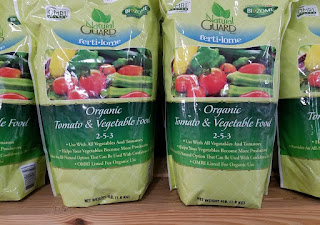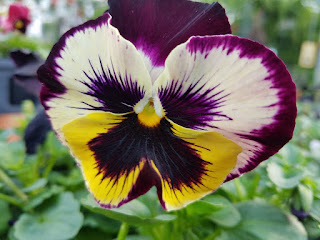Late April into May is the time to plant potatoes. While it may be tradition to plant potatoes on St. Patrick’s Day, potatoes do best if you plant them when the soil temperature is in the mid to upper 40°'s and the soil is dry enough to be worked. Begin by buying certified seed potatoes. Potatoes purchased at the grocery store are often treated to keep them from sprouting.
You can choose from Early season Red Norland, Yukon Gold or Red Pontiac. Early season potatoes generally mature within 75 to 90 days. Mid-season varieties include Russet Burbank, Kennebec White and Viking Red. Mid-season takes 95 to 110 days to mature. For best harvest, choose seed potatoes from each category so they’ll mature through the growing season. At this point, some gardeners prefer to pre-sprout their seed potatoes. This process is called “chitting” and can encourage faster growth, once the seed potatoes are planted. Pre-sprouting is not necessary.
Small seed potatoes can be planted whole. Larger seed potatoes can be cut in half. Cut the potato so that each piece has at least 2 eyes. Set the cut pieces aside for a day, to allow them to cure. Next, pick a planting site in the garden. An appropriate spot should receive six to eight hours of sun each day. It’s important to avoid planting in the same area you grew potatoes or tomatoes last season. Take time to amend the planting site with Earth Essential’s Sheep, Peat and Compost. This product is produced locally and will help improve soil texture and structure. Traditionally, potatoes are grown in rows.
Dig straight trenches about 2 feet apart, add Steamed Bone Meal to the bottom of the trench and cover slightly. This will allow the potato roots to grow into the fertilizer. Plant your potatoes about 12 inches apart in the trench and cover with 4" to 5" of soil. As your potato plants begin to sprout, it’s important to keep all but the top four or five inches of stem covered with dirt. This process is called hilling. Hilling can lead to greater yields because more of the potato plant stem is in contact with the soil. Hilling also protects the developing potatoes from sunlight. Exposure to sunlight will turn the potatoes green and cause them to be bitter. You can use any excess dirt from between the rows or simply add more Sheep, Peat and Compost to cover each plant. Potatoes like to be kept moist and the best way to water your potatoes is to irrigate frequently enough to keep the soil around your plants moist. It’s important to water potato plants at the base, not overhead. Don't have a lot of space? Potatoes may also be grown in pots, five gallon buckets or soft-sided containers called Smart Pots. These are great ways to grow potatoes on the balcony or patio.
Plan to feed your plants through the growing season by laying additional Potash fertilizer along the side of the side of the row (called side dressing), then water in. You can begin to harvest your potatoes about two weeks after the plant finishes flowering. At this time, you’ll find “new” potatoes or baby potatoes, small but very good to eat. If you want late potatoes, wait 2 or 3 weeks after the foliage dies back, then dig carefully around each plant to harvest your potatoes. Store your potatoes in a dark, cool location, if you don’t plan to eat them right away.














